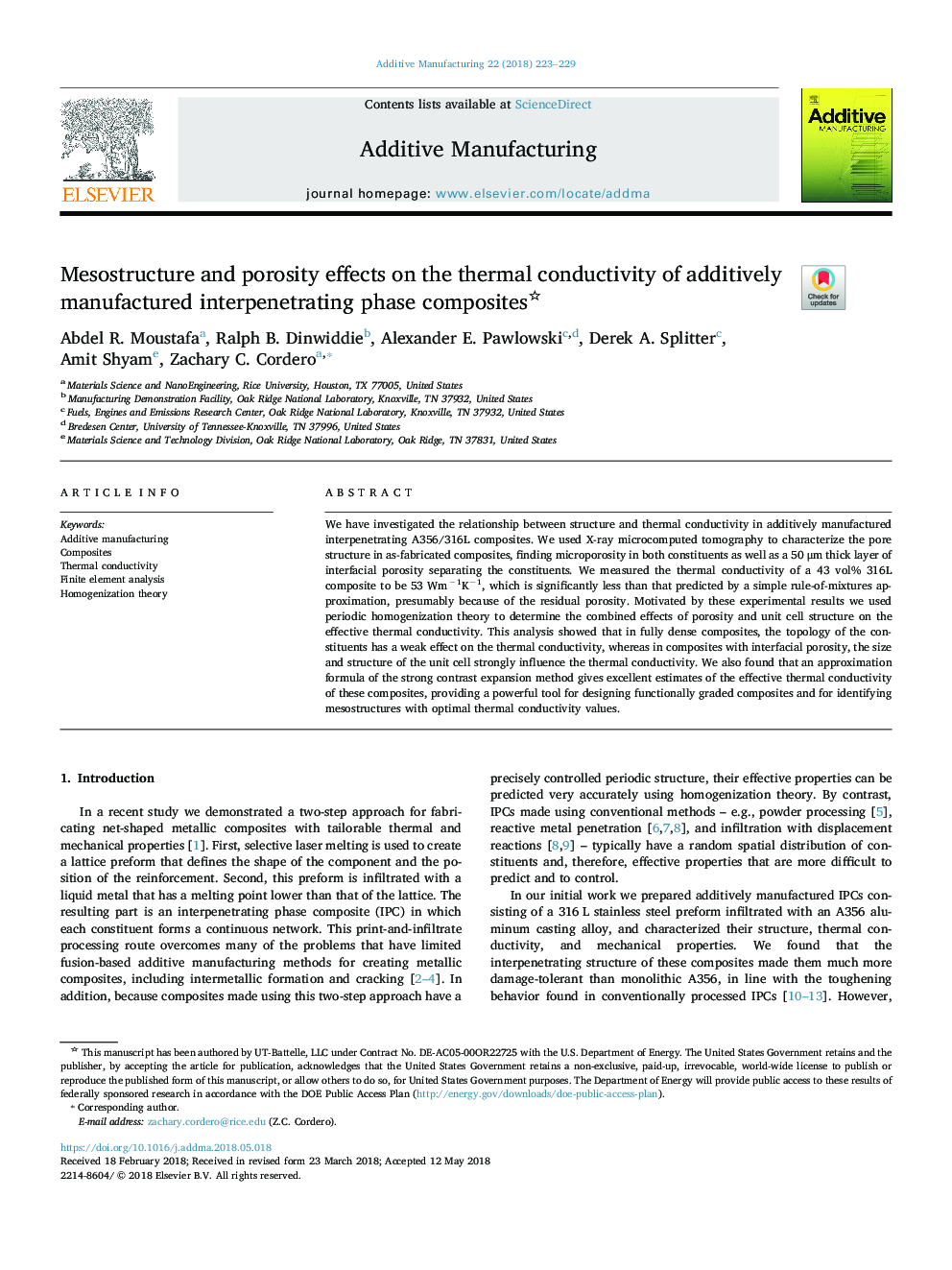| Article ID | Journal | Published Year | Pages | File Type |
|---|---|---|---|---|
| 7205739 | Additive Manufacturing | 2018 | 7 Pages |
Abstract
We have investigated the relationship between structure and thermal conductivity in additively manufactured interpenetrating A356/316L composites. We used X-ray microcomputed tomography to characterize the pore structure in as-fabricated composites, finding microporosity in both constituents as well as a 50 μm thick layer of interfacial porosity separating the constituents. We measured the thermal conductivity of a 43 vol% 316L composite to be 53 Wmâ1Kâ1, which is significantly less than that predicted by a simple rule-of-mixtures approximation, presumably because of the residual porosity. Motivated by these experimental results we used periodic homogenization theory to determine the combined effects of porosity and unit cell structure on the effective thermal conductivity. This analysis showed that in fully dense composites, the topology of the constituents has a weak effect on the thermal conductivity, whereas in composites with interfacial porosity, the size and structure of the unit cell strongly influence the thermal conductivity. We also found that an approximation formula of the strong contrast expansion method gives excellent estimates of the effective thermal conductivity of these composites, providing a powerful tool for designing functionally graded composites and for identifying mesostructures with optimal thermal conductivity values.
Keywords
Related Topics
Physical Sciences and Engineering
Engineering
Industrial and Manufacturing Engineering
Authors
Abdel R. Moustafa, Ralph B. Dinwiddie, Alexander E. Pawlowski, Derek A. Splitter, Amit Shyam, Zachary C. Cordero,
